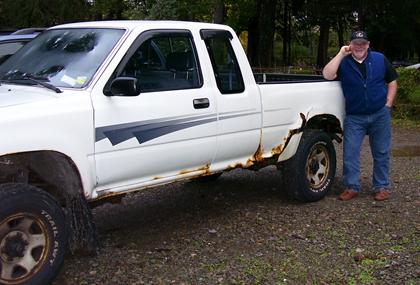By Tom Torbjornsen
Dear Tom,
I own a 2004 Ford F-150. It has a bad vibration at speeds of 50 to 60 mph. The vibration comes from the rear and it’s gotten worse lately. What could cause this?
Tammy from Santa Barbara, CA
Tammy,
Your car has a drivetrain vibration. Ford is aware of the vibration problems with their pickups and they have come out with numerous fixes. As a starting point, go to your local Ford dealer and have a technician take a ride with you. Then he can determine a course of action.
Tom
What is drivetrain vibration?
Drivetrain vibration is a condition where the whole vehicle body vibrates under acceleration. It’s usually attributed to a faulty drivetrain component such as a bent driveshaft or a worn universal or CV joint. Sometimes a bad engine mount or transmission mount can cause the vibration.
Is this exclusive to Ford pickup trucks?
No. Drivetrain vibration can and does happen in all makes and models. It just so happens that Ford had a rash of vibration problems with a certain run of pickup trucks. They have come up with a few fixes from in-field study and testing. The fixes include installation of vibration dampers on the transmission, replacement of body bolts on the bed, and engine/trans mount replacement, just to mention a few. If you have a Ford pickup that is vibrating, get it to your local Ford dealer so they can identify the source of the vibration in order to determine the course of action for a fix. It may take a few trips to the dealer to solve the problem, so be prepared to do without the vehicle. Also, expect to pay for the repairs because this is not a safety recall. However, if your vehicle is still under an extended warranty, it shouldn’t cost you any money.
How do you track down a drivetrain vibration?
Many times they are tough to track down, so tool manufacturers have come up with an ingenious device called a “Chassis Ear.” It is comprised of a set of microphones, wiring and a headset. You affix the microphones via small spring clips to the area where you suspect the vibration is located. Then you string the wiring close to the outside of the vehicle body and also inside, where you connect it to the headset. Finally, you wear the headset and monitor the sound while driving the vehicle. This helps immensely when tracking down rogue vibrations and sounds.
What else can cause such a vibration?
Worn engine and transmission mounts, made up of metal and rubber, can cause vibrations. The metal bracket that bolts to the engine or the transmission is covered in hard rubber to form a cushion between the engine (or transmission) and the mounting area on the vehicle (usually a portion of the frame or a crossmember). When the rubber degrades, the metal bracket sinks and comes in contact with the vehicle frame, causing a vibration. This condition is called “grounding.” Thus, when a mount goes bad and causes a vibration, we say it is due to a “grounded mount.” To eliminate the drivetrain vibration you must replace the mount.
‘Til next time … keep rollin’.




